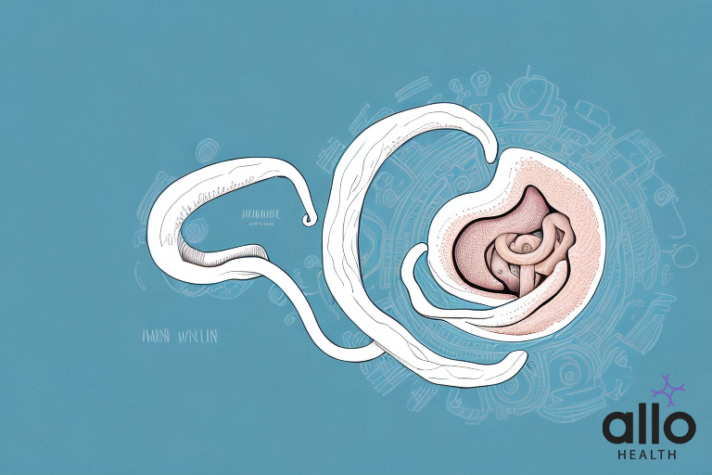Can a Tilted Cervix Cause Infertility?

Allo Health is dedicated to personalized well-being, offering support and trusted information tailored to individual health goals. The platform emphasizes human-generated content, led by a distinguished medical team of experts, including physicians and sexual health specialists. Their commitment to credibility involves rigorous fact-checking, authoritative research, and continuous updates to ensure accurate, up-to-date information. Allo Health's unique approach goes beyond conventional platforms, providing expert-led insights and a continuous commitment to excellence, with user feedback playing a crucial role in shaping the platform's authoritative voice.

Dr. Raj. R holds an undergraduate medical degree from the Philippines, and has a bachelors background in Psychology. His experience working in the field of urology further brought his interest forward in working towards his passion of understanding the science of attraction, intimacy, sex and relationships. A key motto he practices by remains unprejudiced and non-judgemental care.
Why This Was Upated?
Our experts continually monitor the health and wellness space, and we update our articles when new information became available.
Updated on 16 February, 2024
- Article was updated as part of our commitment to diversity, equity, and inclusion.

"The following blog article provides general information and insights on various topics. However, it is important to note that the information presented is not intended as professional advice in any specific field or area. The content of this blog is for general educational and informational purposes only.
Book consultation
The content should not be interpreted as endorsement, recommendation, or guarantee of any product, service, or information mentioned. Readers are solely responsible for the decisions and actions they take based on the information provided in this blog. It is essential to exercise individual judgment, critical thinking, and personal responsibility when applying or implementing any information or suggestions discussed in the blog."
If you’re trying to conceive and have been struggling, you may be wondering if a tilted cervix could be the culprit. A tilted cervix, also known as a retroverted uterus, occurs when the uterus is tipped backwards, positioning the cervix towards the spine rather than the bladder.
Tilted Cervix Causes & Symptoms
The cervix is the lower part of the uterus that connects to the vagina. Normally, the cervix is positioned centrally and aligns with the vaginal canal. But, a tilted cervix, also known as a tipped or retroverted uterus, occurs when the uterus is tilted backward towards the spine rather than forward. This is a common anatomical variation and is usually not a cause for concern. In fact, many women have a tilted cervix and may not even be aware of it, as it often doesn’t cause noticeable symptoms.
Causes of a tilted cervix:
- Congenital variation: Some women naturally have a tilted cervix due to the way their uterus developed in the womb.
- Pregnancy: During pregnancy, the position of the uterus can change, and a woman may develop a tilted cervix temporarily.
- Childbirth: The position of the cervix can be affected by childbirth, especially if there are complications or if the woman has had multiple pregnancies.
- Pelvic surgery: Surgical procedures in the pelvic area can sometimes result in a tilted cervix.
- Pelvic inflammatory disease (PID): Infections or inflammation in the pelvic area can contribute to changes in the position of the cervix.
Symptoms of a tilted cervix: In many cases, a tilted cervix does not cause noticeable symptoms. But, some women may experience:
- Pain during intercourse: Some women with a tilted cervix may find certain sexual positions uncomfortable or painful.
- Back pain or pelvic discomfort: In rare cases, a tilted cervix may be associated with back pain or pelvic discomfort, especially during menstruation.
- Difficulty using tampons: Some women with a severely tilted cervix may find it challenging to insert tampons comfortably.
- Urinary concerns: In some instances, a tilted cervix may exert pressure on the bladder, leading to increased frequency or urgency of urination.
It’s important to note that these symptoms are not universal, and many women with a tilted cervix do not experience any adverse effects. If a woman is experiencing persistent or severe symptoms, it is advisable to consult a healthcare provider. They can perform a pelvic exam to determine the position of the cervix and address any underlying concerns. In most cases, no specific treatment is required for a tilted cervix unless it is causing significant discomfort or interfering with fertility.
Can a Tilted Cervix Cause Infertility?

In general, having a tilted cervix is a common and usually benign anatomical variation that does not directly cause infertility. The position of the cervix, whether tilted or not, is a normal part of the wide range of anatomical differences among women. But, in some cases, a tilted cervix might be associated with conditions or factors that can impact fertility. It’s important to distinguish between the tilted cervix itself and any potential underlying concernsthat may contribute to difficulties in conceiving. Here are some considerations:
- Natural Variation: Many women with a tilted cervix have no fertility concerns. The position of the cervix is just one factor, and it doesn’t necessarily affect a woman’s ability to conceive or carry a pregnancy to term.
- Underlying Conditions: Sometimes, a tilted cervix may be associated with conditions that can impact fertility, such as endometriosis or pelvic inflammatory disease (PID). These conditions can cause inflammation, scarring, or other changes in the reproductive organs that may affect fertility.
- Sexual Positions and Conception: While the position of the cervix itself does not impact fertility, some couples may find that certain sexual positions are more comfortable or effective for conception, especially if a woman has a severely tilted cervix. But, this is not a direct cause of infertility.
- Pregnancy and Childbirth: Pregnancy itself can sometimes change the position of the uterus and cervix. Additionally, complications during childbirth, such as tearing or scarring, may contribute to fertility concerns in some cases.
- Evaluation by a Healthcare Provider: If a woman is experiencing difficulty conceiving, it’s important to consult with a healthcare provider or a fertility specialist. They can perform a thorough evaluation, including assessing the position of the cervix, checking for underlying conditions, and exploring other factors that may affect fertility.
- Treatment Options: Treatment for fertility concerns associated with a tilted cervix will depend on the underlying cause. It might involve addressing conditions like endometriosis or PID, undergoing fertility treatments, or exploring assisted reproductive technologies.
It’s crucial to approach fertility concerns holistically and consider various factors, including the health of both partners. If a couple is struggling to conceive, seeking guidance from a healthcare professional or fertility specialist is recommended to determine the specific causes and explore appropriate treatment options.
Tilted Cervix Treatment
A tilted cervix, also known as a tipped or retroverted uterus, usually does not require specific treatment unless it is causing significant discomfort or fertility concerns. In many cases, a tilted cervix is a normal anatomical variation and does not lead to health concerns. But, if treatment is necessary, it will depend on the underlying cause or associated symptoms. Here are some potential approaches to address a tilted cervix:
- No Treatment: If a tilted cervix is not causing symptoms or fertility concerns, no specific treatment may be necessary. Many women with a tilted cervix lead normal, healthy lives without any intervention.
- Pain Management: If a tilted cervix is causing pain or discomfort, especially during intercourse, over-the-counter pain relievers, such as ibuprofen or acetaminophen, may help manage symptoms. Experimenting with different sexual positions may also alleviate discomfort.
- Pelvic Physical Therapy: Some women with pelvic pain or discomfort related to a tilted cervix may benefit from pelvic physical therapy. This specialized form of physical therapy focuses on the muscles, ligaments, and tissues in the pelvic region, aiming to improve strength, flexibility, and overall pelvic health.
- Addressing Underlying Conditions: If a tilted cervix is associated with conditions like endometriosis or pelvic inflammatory disease (PID), addressing these underlying concerns may be necessary. Treatment may involve medications, such as antibiotics for PID or hormonal therapies for endometriosis.
- Fertility Treatments: If a woman with a tilted cervix is experiencing difficulty conceiving, fertility treatments may be considered. In vitro fertilization (IVF) or other assisted reproductive technologies may be recommended based on the specific fertility concerns identified.
- Surgery: In rare cases, surgery may be considered to correct the position of the uterus or cervix. But, this is usually only recommended if the tilt is severe and causing significant symptoms.
It’s crucial to note that the decision to pursue treatment should be made in consultation with a healthcare provider, preferably a gynecologist or a specialist in reproductive health. The appropriate course of action will depend on the individual’s symptoms, overall health, and any underlying conditions.
Women who are experiencing discomfort, pain, or fertility concerns associated with a tilted cervix should seek medical advice. A thorough evaluation will help determine the cause of the symptoms, and the healthcare provider can recommend an appropriate treatment plan based on the specific circumstances.
Most Asked Questions
-
Can a tilted cervix be corrected to improve fertility?
Correction of a tilted cervix for fertility purposes is not a common approach. Instead, healthcare providers focus on treating underlying conditions or recommending fertility treatments based on the specific concerns identified during evaluation. Correction through surgery is considered only in exceptional cases.
-
Is surgery necessary to address fertility concerns related to a tilted cervix?
Surgery is rarely necessary for a tilted cervix unless the tilt is severe and causing significant symptoms or fertility concerns. Most cases can be managed through less invasive interventions, such as addressing underlying conditions or exploring fertility treatments.
-
Can a tilted cervix cause infertility?
A tilted cervix itself is not a direct cause of infertility. In most cases, it's a normal anatomical variation and does not affect fertility. But, if associated with conditions like endometriosis or pelvic inflammatory disease, it might contribute to fertility concerns.
-
Does a tilted cervix affect conception during intercourse?
While a tilted cervix doesn't hinder conception, some couples may find certain sexual positions more comfortable or effective. Experimenting with positions that align with the cervix's angle may improve comfort during intercourse, potentially enhancing the chances of conception.






































